




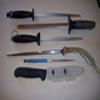
Knife Sharpening Part I By Tom Claycomb III - Today we’ll do an introduction into knife sharpening and cover blade Continue Reading
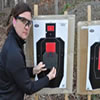
Succeeding with the Fundamentals: It’s in the Details By Michelle and Chris Cerino - The difference between a good shooter and a great shooter is in the details. Continue Reading
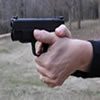
Succeeding with the Fundamentals: Get a Grip By Michelle and Chris Cerino - The primary role of grip is to aid in managing recoil. Continue Reading
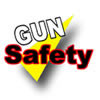
Before a trainee is even allowed to personally handle a firearm, there are several hard and fast safety rules that they have to learn and assimilate until it becomes second nature to them. These firearm safety rules were established in order to ensure that the firearm handler will not inadvertently cause harm to himself, but more importantly, to those around him.
These firearm safety rules are as follows:
Treat every firearm as if it was loaded.
Be conscious of the condition of readiness of your firearm. Avoid any unnecessary handling and do not let anyone else touch your firearm. If unavoidable, make sure that your firearm is unloaded and made safe before handing it over to someone else, and again conduct a safety check on your firearm immediately upon return. Make it a habit to conduct a safety check before handling a firearm for the first time, or when you have lost personal control over it.
Never point the muzzle of a firearm at yourself or anyone else, even if you’re sure it’s unloaded.
Accidental discharges of firearms do happen. Never point the muzzle of your firearm to any part of your body or to that of ‘friendlies’, particularly when moving with a firearm in your hand. Always point the firearm in a safe direction and avoid putting your hand over or near the muzzle of the firearm. Visualize an imaginary beam of light emitting from the muzzle of your firearm, and do not allow this light beam to touch anything that you do not wish to destroy.
Keep your finger off the trigger unless you are ready to shoot.
Your trigger finger is your last line of safety – for users of firearms without external safeties such as the Glock line of semi-automatic pistols and the Walther P99, your trigger finger is your only line of safety. Do not put your finger inside the trigger guard of your firearm unless you have made the conscious decision to engage your target, lined it up with your sights and are ready to pull the trigger.
Be sure of your target and what is beyond it.
Positively identify your target and make sure you have an unobstructed line of fire to the target. Be conscious of what lies beyond your target to ensure that there is nothing there that you wish to harm or destroy should your bullet miss or pass through the target. This is of particular importance in engagements inside houses or in densely populated areas.
Know how to properly operate your gun.
It is important to become thoroughly familiar with your gun. You should know its mechanical characteristics including how to properly load, unload and clear a malfunction from your gun. Obviously, not all guns are mechanically the same. Never assume that what applies to one make or model is exactly applicable to another. You should direct questions regarding the operation of your gun to your firearms dealer, or contact the manufacturer directly.
Use Correct Ammunition
Using improper or incorrect ammunition can destroy a gun and cause serious personal injury. It only takes one cartridge of improper caliber or gauge to wreck your gun, and only a second to check each one as you load it. Be absolutely certain that the ammunition you are using matches the specifications that are contained within the gun's instruction manual and the manufacturer's markings on the firearm.
Ammunition that has become very wet or has been submerged in water should be discarded in a safe manner. Do not spray oil or solvents on ammunition or place ammunition in excessively lubricated firearms. Poor ignition, unsatisfactory performance or damage to your firearm and harm to yourself or others could result from using such ammunition.
If Your Gun Fails To Fire When The Trigger Is Pulled, Handle With Care!
Occasionally, a cartridge may not fire when the trigger is pulled. If this occurs, keep the muzzle pointed in a safe direction. Keep your face away from the breech. Then, carefully open the action, unload the firearm and dispose of the cartridge in a safe way.
Always Wear Eye And Ear Protection When Shooting
All shooters should wear protective shooting glasses and some form of hearing protectors while shooting. Exposure to shooting noise can damage hearing, and adequate vision protection is essential. Shooting glasses guard against twigs, falling shot, clay target chips and the rare ruptured case or firearm malfunction. Wearing eye protection when disassembling and cleaning any gun will also help prevent the possibility of springs, spring tension parts, solvents or other agents from contacting your eyes. There is a wide variety of eye and ear protectors available. No target shooter, plinker or hunter should ever be without them.
Be Sure The Barrel Is Clear Of Obstructions Before Shooting
Before you load your firearm, open the action and be certain that no ammunition is in the chamber or magazine. Be sure the barrel is clear of any obstruction. Even a small bit of mud, snow, excess lubricating oil or grease in the bore can cause dangerously increased pressures, causing the barrel to bulge or even burst on firing, which can cause injury to the shooter and bystanders. Make it a habit to clean the bore and check for obstructions with a cleaning rod immediately before you shoot it. If the noise or recoil on firing seems weak or doesn't seem quite "right," cease firing immediately and be sure to check that no obstruction or projectile has become lodged in the barrel.
Don't Alter Or Modify Your Gun, And Have Guns Serviced Regularly
Firearms are complicated mechanisms that are designed by experts to function properly in their original condition. Any alteration or change made to a firearm after manufacture can make the gun dangerous and will usually void any factory warranties. Do not jeopardize your safety or the safety of others by altering the trigger, safety or other mechanism of any firearm or allowing unqualified persons to repair or modify a gun. You'll usually ruin an expensive gun. Don't do it!
Learn The Mechanical And Handling Characteristics Of The Firearm You Are Using
Not all firearms are the same. The method of carrying and handling firearms varies in accordance with the mechanical characteristics of each gun. Since guns can be so different, never handle any firearm without first having thoroughly familiarized yourself with the particular type of firearm you are using, the safe gun handling rules for loading, unloading, carrying and handling that firearm, and the rules of safe gun handling in general.
Store your gun safely and securely to prevent unauthorized use.
Guns and ammunition should be stored separately. When the gun is not in your hands, you must still think of safety. Use a California-approved firearms safety device on the gun, such as a trigger lock or cable lock, so it cannot be fired. Store it unloaded in a locked container, such as a California-approved lock box or a gun safe. Store your gun in a different location than the ammunition. For maximum safety you should use both a locking device and a storage container.
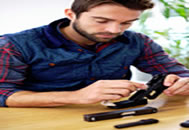
Tips on Lubrication
Let's start with what you shouldn't use - WD40 or anything like it. WD-40 is a fine light duty oil and rust penetrator.
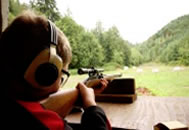
Tips on Headspace
Headspace can be thought of as something like this: The cartridge in your chamber is in a safe with the bolt of the rifle as the door.
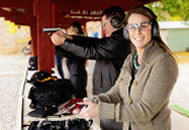
Handgun Tips
Cock the hammer (chamber and magazine empty of course). Without depressing the Grip Safety, pull the trigger. The hammer should NOT...
Copyright © 2015 - All Rights Reserved - Swab-its.com
Swab-its® is a registered trademark of Super Brush LLC
- Disclaimer